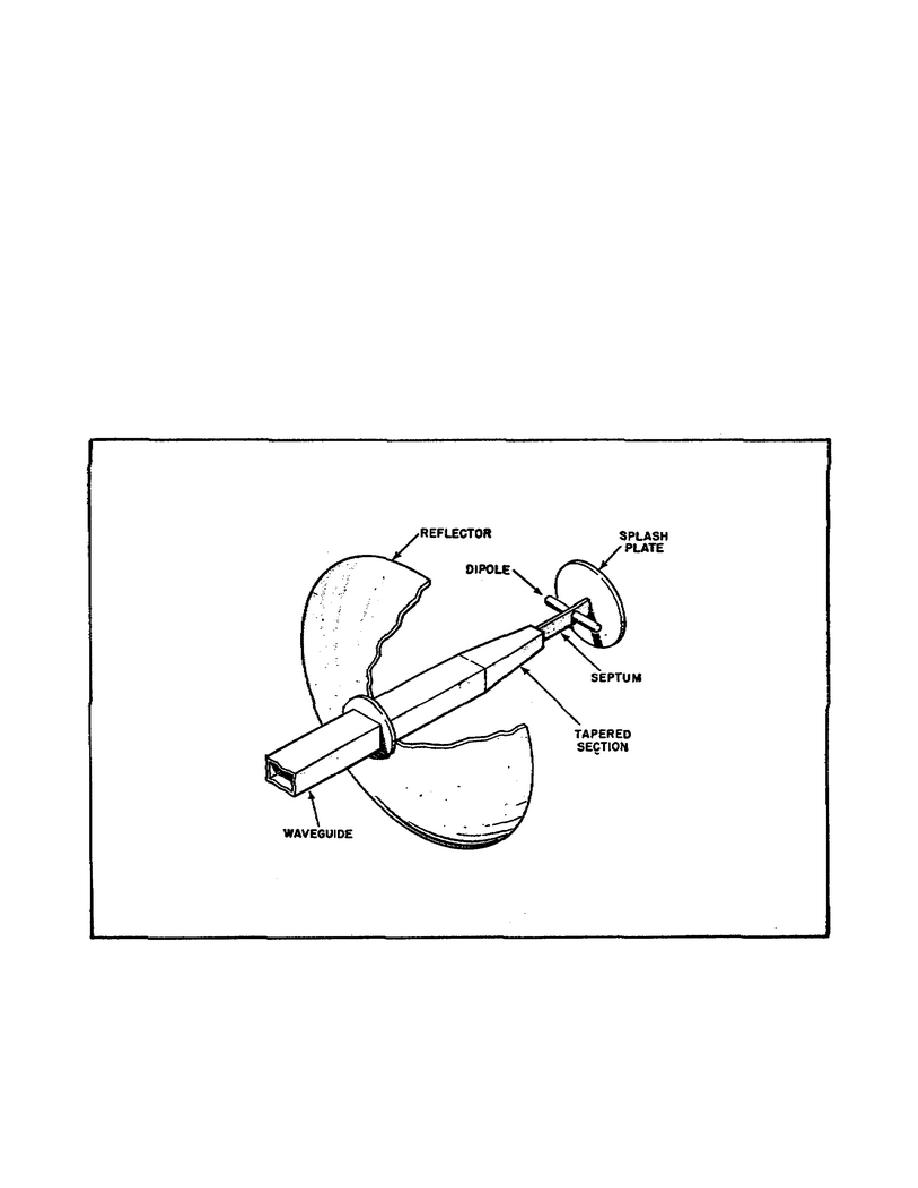
(1) Dipole. The usual rear feed is a dipole fed by radiation from a
waveguide and a reflector as shown in Figure 160. The waveguide is tapered
slightly to obtain and approximate impedance match to the dipole which it
feeds. The dipole, which is simply a half-wave antenna, is supported on the
septum that extends from the end of the waveguide. The energy radiated from
the dipole is reflected back toward the main reflector by a small reflector
called a splash plate.
The splash plate is sometimes replaced by another
radiating element as shown in Figure 161. The radiation from the waveguide
sets up electric fields in the neighborhood of the two dipoles.
These
fields induce currents into the dipoles, and the currents cause the dipoles
to radiate.
By adjusting the length of a dipole of this type, it is
possible to change the impedance and consequently the phase of its current
and radiation.
By suitable choice of lengths and spacing, the radiation
from the two dipoles can be made to fall on the main reflector.
Various
other combinations are used also. More than two dipoles are sometimes seen,
and occasionally a combination of two or more dipoles may be used with a
splash plate.
All of these, however, serve the same purpose, causing the
radiation from the waveguide to fall uniformly on the main reflector.
Figure 160.
Rear Feed With a Splash Plate.
217



 Previous Page
Previous Page
